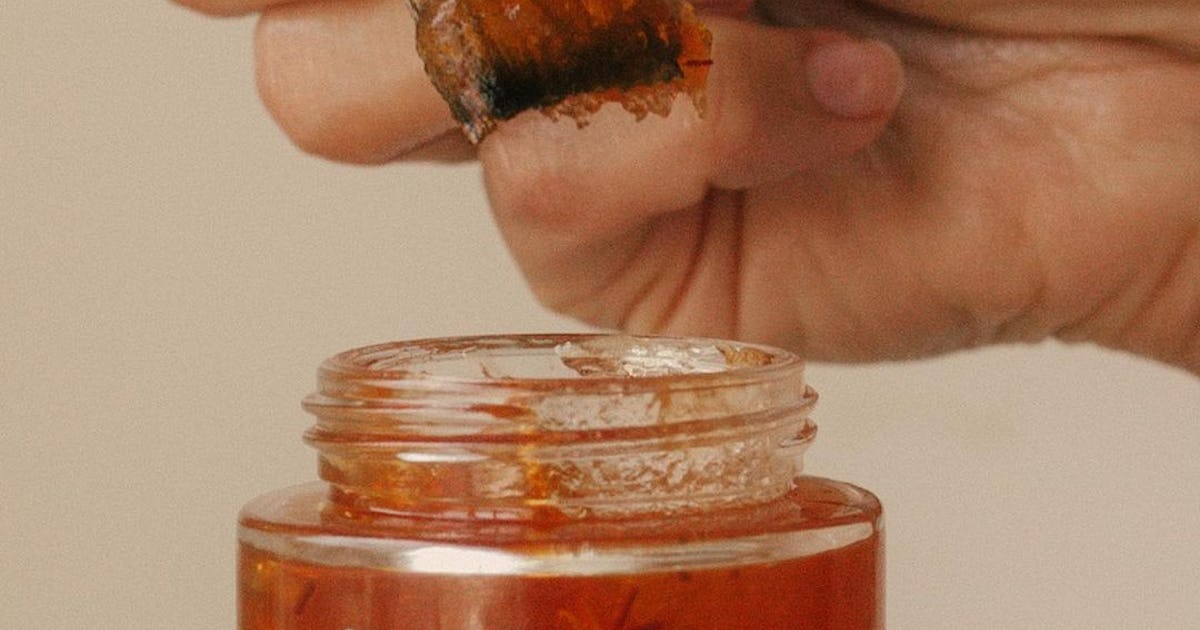There are some, especially on line, who carry on to spread incorrect and deceptive information about weighted ball education. Our discussion below will offer with Overload/Underload (OU) training in general, and its software to baseball and softball in particular.
1. OU Coaching Defined
2. A Transient Heritage of OU Study and Instruction
3. Other Sports activities That Use OU Education
4. The Added benefits of OU Schooling
5. Other Baseball Industry experts Who Are Proponents of OU Training
OU Training Defined
Working with weight-modified implements that are otherwise equivalent
to individuals used all through level of competition
The weights of these modified tools weigh the two more and fewer than the common competitive bodyweight.
This kind of tools allow for athletes to prepare extra exactly for their sport. Sport-specific strength and electrical power are made by movements with resistance or guidance that imitate the joint motion of the ability – Specific RESISTANCE Teaching. What will make this form of schooling so successful is that the weights of the modified equipment employed are major ample to make a conditioning influence, nevertheless light enough to not adversely have an affect on the athlete’s mechanical skills.
Commonly, OU Training is employed to enhance an athlete’s Electric power. Ability is defined as the rate at which one can perform operate, or the means to exert muscle mass drive swiftly. This capacity is related to, but unique from energy, which is outlined as the potential to exert muscle mass pressure.
As an example, strength is shown as the ability to decide up a 30 oz. bat. Electric power is demonstrated by the ability to push a baseball 400+ ft although swinging that 30 oz. bat.
As long as the instruments employed are not way too large, mechanics are not affected, producing OU Training what I connect with “skill-neutral.” In accordance to printed information (see beneath) the great body weight selection for conditioning and efficiency enhancement is up to 20% +/- the excess weight of the aggressive put into practice. I do NOT advise making use of baseballs weighing much more than 6 oz., or softballs heavier than 8 oz. There is some data that signifies utilizing a great deal heavier balls can negatively have an impact on throwing mechanics, potentially primary to arm challenges. Added motor-units are recruited though throwing these weighty balls that are then not made use of when the normal competitive ball is applied. As relates to our dialogue right here, the modified implements ball players can use are weighted baseballs and softballs, and several weights of baseball/softball bats, and/or gadgets hooked up to these bats.
Conversely, this kind of teaching would not be beneficial for training other athletic skill regions, for illustration, capturing or throwing accuracy. OU schooling could help a golfer generate their tee shots further more, but it would not support eliminate their slice if they have just one, or normally help them to strike straighter drives. OU coaching could enable a younger basketball player who is owning trouble hoisting a basketball higher more than enough to make a shot in a 10 foot hoop, but the shot nonetheless has to be accurate more than enough to go in. Accuracy coaching essential for a precise talent would thus be performed apart from power work.
If I was working with a pitcher who experienced manage complications, I would not split out the weighted baseballs and assume education of this type to help him throw strikes. I would look at his mechanics and make any wanted changes, and maybe counsel some drill operate to help strengthen the new ideas being taught. Such a participant may possibly also be operating with weighted baseballs/softballs as portion of their in general schooling regimen, but this would take place at a distinct time, and for the needs of establishing much more ability and velocity driving his/her throws as perfectly as conditioning the throwing buildings of the arm.
A prospective aspect-benefit of OU training is that a player could make improvements to their precision by virtue of the elevated variety of reps or throws they are doing. This would be an artifact of the major objective of strengthening ability, however, and not the principal reason of OU schooling.
A Quick History OF OU Exploration AND Education
The to start with exploration involving OU instruction was done in the 1970s by the Soviet Union and East-European observe and field groups. A fantastic offer of this analysis has been published in prestigious, peer-reviewed journals close to the globe. Shot-putters, javelin, discus and hammer throwers, and sprinters were being the early adopters of this instruction process.
Exploration with baseball players dates back again to the 1960s. This is just a sampling of scientific studies involving OU Teaching and baseball. There are dozens additional relating to OU Instruction typically:
1) Coop DeRenne, Kwok W. Ho and James C. Murphy. 2001: Outcomes of Common, Unique, and Particular Resistance Education on Throwing Velocity in Baseball: A Transient Assessment. The Journal of Energy and Conditioning Analysis: Vol. 15, No. 1, pp. 148-156.
2) Escamilla et al. 2000: Sporting activities Med Apr 29 (4): 259-272
3) David J. Szymanski, MEd, CSCS, June 1998: The Consequences of Different Weighted Bats on Bat Velocity – A Literature Critique. Energy and Conditioning, pp. 8 – 11
4) Coop DeRenne, Barton P. Buxton, Ronald K. Hetzler and Kwok W. Ho. 1995: Consequences of Weighted Bat Employ Schooling on Bat Swing Velocity. The Journal of Toughness and Conditioning Research: Vol. 9, No. 4, pp. 247-250.
5) Coop DeRenne, Barton P. Buxton, Ronald K. Hetzler and Kwok W. Ho. 1994: Outcomes of Below- and Overweighted Carry out Training on Pitching Velocity. The Journal of Toughness and Conditioning Study: Vol. 8, No. 4, pp. 247-250.
6) Coop DeRenne, Kwok Ho and Alan Blitzblau. 1990: Consequences of Weighted Employ Education on Throwing Velocity. The Journal of Utilized Sport Science Study, 4, 16-19.
7) DeRenne, C., Tracy, R., and Dunn-Rankin, P. 1985: Escalating Throwing velocity. Athletic Journal, April, 36 – 39.
8) Bagonzi, J. A. 1978: The Results of Graded Weighted Baseballs, Free Fat Education, and Simulative Isometric Physical exercise on the Velocity of a Thrown Baseball. Master’s thesis, Indiana University.
9) Litwhiler, D., and Hamm, L. 1973: Overload: Result on Throwing Velocity and Accuracy. Athletic Journal, 53, 64-65.
10) Brose, D.E., and D.L. Hanson 1967: Effects of Overload Instruction on Velocity and Accuracy of Throwing. Analysis Quarterly. 38:528-533.
11) Elias, J. 1964. The Outcome of Overload Schooling on Velocity in Baseball Pitching. Unpublished Master’s thesis, Springfield Faculty, Springfield, Massachusetts.
12) Egstrom, G.H., Logan, G.A., and E. L. Wallis 1960: Acquisition of Throwing talent Involving Projectiles of varying Body weight. exploration Quarterly 31:420-425.
OTHER Sports THAT USE OU Training
Around and underloaded implements and methods are made use of quite successfully by athletes in numerous athletics to increase performance:
Keep track of & Field: heavier and lighter discuses, javelins, shot balls (shot putters) and hammers sprinting with resistance, these as pulling weighted sleds, putting on weighted vests, and downhill operating on a slight downward slope, currently being towed while operating, and working on a substantial pace treadmill (overSPEED education) .
Swimming: sporting swimming gloves that allow for extra drinking water to be pulled for the duration of an arm stroke swimming though dragging an implement or usually artificially manufacturing drag on a swimmer.
Heavier footballs (more than the typical 15 oz) are thrown by quarterbacks heavier basketballs are used by basketball players. Boxers practice with different weights of boxing gloves.
Take note that ALL of these training implements are utilised to improve Energy and/or Velocity by way of the joint range-of-movement (ROM) in the action being qualified, which can direct to increased effectiveness.
THE Positive aspects OF OU Schooling
Gain #1
Suitable power and conditioning regimens, these kinds of as OU Coaching, can minimize and even prevent arm accidents related to throwing by increasing Toughness/Endurance. Improved Toughness – helps reduce injury. Enhanced Endurance – allows manage throwing velocity, lets for far more pitches to be thrown ahead of tiring.
The muscles, tendons, ligaments and bones (even nerves) of the shoulder and arm in general will positively adapt to an proper increase in training load. They become more durable and much more resilient, capable to take care of better workloads. Such teaching need to conform to the pursuing two pointers:
1) The education load is ample to deliver the ideal training effect, yet not so fantastic as to negatively influence throwing (or hitting) mechanics.
2) The thrower’s software introduces OU schooling progressively and systematically, employing a teaching principle recognized as Progressive Overload (Clarkson & Watson, 1990). This principle states that “toughness and stamina cannot be increased unless of course the muscle groups are pressured further than their normal workload. To increase the workload, enhance the frequency, period and intensity of your exercise system.”
To properly and safely and securely enhance throwing velocity, depth is increased by applying 20% +/- OU balls, length is greater by step by step growing the range of OU throws performed with every exercise, and frequency is improved by the selection of days of throwing workouts. Arm/shoulder constructions educated in this manner are far more capable of managing the standard aggressive activity needs, which are fewer than those imposed by the OU conditioning. An arm conditioned for building numerous throws with a 6 oz ball will extra than likely out-accomplish an arm trained only to conduct less than a 5 oz. load (ability, mechanics and over-use factors apart).
Dr. Mike Marshall, in his Pitching Ebook (Chapter 32, pp. 5 & 6), describes a notion he phone calls “Plioanglos Coaching” as a signifies of schooling the exterior rotator cuff muscle groups (decelerators). This is similar to the suggestions expressed over:
“Plioanglos education signifies including resistance to forward ballistically rushing pitching arms to raise capacities of lengthening deceleration muscle mass to quit.”
Potentially this is best summed up by way of the nicely-recognised conditioning theory S.A.I.D. – Distinct Adaptation to Imposed Calls for (Wallis and Logan, 1964). This theory states that the body will adapt to worry imposed on it (as long as it is not too much, in which circumstance the physique breaks down). A person risk-free and effective way of doing this is with OU Teaching, employing the aforementioned tips.
Gain #2
Improved on-industry general performance – greater throwing velocity (or bat velocity).
Increased arm speed all through the throwing Array of Motion (ROM). This attribute is produced by throwing a ball weighing 20% a lot less than the competitive ball. Since the ball weighs considerably less, the arm moves more speedily by its ROM, main to elevated throwing velocity. Throwing lighter balls has been demonstrated (each clinically and on the ball area) to be a single of the very best means of raising throwing velocity. Swinging properly lighter bats aids develop enhanced bat speed. This is also recognised as overSPEED training.
A observe on “light” ball instruction, high faculty and older gamers: This can be an fantastic way for pitchers in specific to get a very good sum of throwing in involving begins with considerably less stress on the arm. For youth ball players – why do we make lighter bats for younger ball gamers, nonetheless make them toss the exact same 5 oz ball that fellas like Roger Clemens and Randy Johnson toss? That youth fields are scaled-down will make little difference when it comes to the size of some of the throws that younger gamers have to make. These minimal arms nevertheless have to make a wonderful deal of power to propel the ball. Underweight balls (4 oz.) are a Great resource for gamers of all ages.
Gain #3
Improved neuromuscular conditioning.
In accordance to Vern Gambetta, Power and Conditioning Coach for the Chicago White Sox, the most important supply of exhaustion in baseball pitching is not metabolic, but neural. The metabolic needs – conditioning – are just not that fantastic in baseball or softball. You should not misunderstand – I am talking right here of the capabilities essential to be a very good hitter or pitcher. Remaining very well conditioned is nonetheless important, as this will assistance protect against personal injury, but no question you’ve got noticed gamers like John Kruk, David Wells, Tony Gwynn, and other people. Significant degree performers who are not notably nicely conditioned.
Neural exhaustion takes place at the motor-unit degree. In the act of pitching, for case in point, the Central Nervous Program sends a nerve impulse to a motor device (MU) in the shoulder included in this process. The means of these MUs to transmit these signals, with optimum frequency and pace, diminishes about time. This “breakdown” takes place at the nerve synapse/biochemical stage, which THEN sales opportunities to slower and weaker muscle contractions.
In baseball pitching, throwing muscle groups and tendons in the shoulder are stretching and contracting frequently while accelerating and decelerating the arm all through an overhand toss – continuous biochemical exercise at the neuromuscular junction. As neural exhaustion sets in, it will become manifest in mechanical challenges. For instance, a pitcher dropping their shoulder later in the game, primary to a loss of handle or velocity. The difficult detail is, this “tiredness” is ordinarily not felt by the pitcher, but it occurs yet.
This is in which right conditioning (OU Schooling) arrives in. Analysis has revealed that neurons adapt to stress considerably like muscle tissues do. Motor neurons uncovered to higher-frequency impulses finish up with extra formulated neuromuscular junctions which surface more able of managing large-depth impulses improved than all those not exposed to identical stress. The S.A.I.D. theory in influence again.
Does this indicate OU Coaching is idiot evidence, and has in no way harmed a participant? Of training course not. Most any type of conditioning, carried out improperly, can lead to difficulties or harm. Throwing by itself, be it footballs, baseballs, rocks or whichever, has harmed lots of a throwing arm. Running is the cause of several knee and ankle accidents. Shoulder complications among swimmers are prevalent. Ice skaters frequently endure from some incredibly agonizing leg conditions. I could go on, but you get the position. All of these injuries and difficulties come about as a element of the athlete’s normal exercise and aggressive activities. Carrying out them adequately minimizes the danger, of program. So does a wide range of strength and conditioning approaches, such as OU Teaching.
OTHER BASEBALL Experts WHO ARE PROPONENTS OF OU Education
Dr. John Bagonzi. Previous pitcher with the Pink Sox. Acknowledged as the “Pitching Professor” and writer of the very regarded guide, “The Act of Pitching.”
Dr. Tom Home. Previous pitcher with the Rangers. Author/co-author of a number of books, such as “The Winning Pitcher” and “Electricity Baseball.” Own pitching coach to Nolan Ryan, Randy Johnson, Mark Prior, and many others.
Dr. Mike Marshall. Former Cy Younger Award winner with the Dodgers. Author of the guide, “Coaching Pitchers” and the pitching instruction DVD, “Dr. Mike Marshall’s Pitching Tutorial Movie.”
Dr. Coop DeRenne. Former skilled player, instructor and specialist to the Chicago White Sox and Texas Rangers. Almost certainly this country’s major baseball researcher, supervising 16 hitting and pitching heat-up, biomechanical, and visual investigation initiatives making use of above 600 beginner and experienced hitters and pitchers as his subjects. Co-creator (with Tom House) of the guide, “Ability Baseball” and other baseball training guides.
ASMI – The American Sporting activities Medicine Institute
All of these industry experts have impeccable credentials and favor some style of weighted ball training.



















/https://specials-images.forbesimg.com/imageserve/604ad3acf728cc29468fec2e/0x0.jpg?cropX1=0&cropX2=846&cropY1=47&cropY2=523)
![See Inside the Amazing Homes of State Music’s Queens [Pics]](https://townsquare.media/site/204/files/2020/08/tim-mcgraw-faith-hill-mansion-california-pictures.jpg?w=1200&h=0&zc=1&s=0&a=t&q=89)










